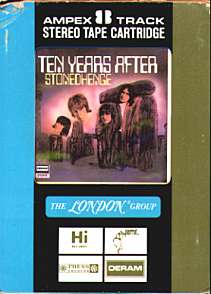|
  
Ron wrote an exhuastive article last year on
the 8-track manufacturing process, and here's his followup with great pictures!
My Year at AMPEX - Updated! June 2001
by Ron Schauer rschauer@cwnet.com
Only a few days ago as I passed through Chicago's O'Hare airport on a
connecting flight, I looked down at the old Ampex building and wondered who
occupied it now. I thought of a co-worker whose Alaskan Malamute dog decided to
bite a chunk out of his Oldsmobile's dashboard. I wondered where Mary Seuratt's
descendent was now. I recalled fixing jammed cassette and 8-track automobile
decks for the production line ladies during my breaks. I remembered all the
great folks that I worked with there and what once went on within those walls.
Memories and more memories.
The first article, on the web in February of 2000 has allowed me to hear from
many people who found it interesting or informative. I wish to thank you all and
am glad that I was able to share the story.
One of the folks I heard from was John Harrill who works for Project 70 Audio
Services (a tape duplicating facility in Atlanta, Georgia). He related the
following story to me-
"The Ampex Elk Grove Village facility more or less went out of business
in 1974-1975 and was taken over by CBS who operated it for a couple of years.
When they built their own duplicating facility in Carrollton, Georgia, they no
longer needed the Elk Grove facility and sold off the equipment literally by the
pound. Dwayne Lundine of Media International later contacted John to see if his
company was interested in purchasing any of it. After talking it over with his
partner Jerry, John soon found himself on a plane for Chicago.
 "A month later (in 1977) some of the equipment arrived at their facility
in Atlanta. John and Jerry only purchased the cassette lines though, so it is
very likely that the 8-track equipment was simply scrapped out. He only saw a
Sidewinder briefly in Chicago. "A month later (in 1977) some of the equipment arrived at their facility
in Atlanta. John and Jerry only purchased the cassette lines though, so it is
very likely that the 8-track equipment was simply scrapped out. He only saw a
Sidewinder briefly in Chicago.
"John mentioned Vern Sauer and Clyde Forbus of the Elk Grove facility as
his principle contacts there. Their names are only vaguely familiar to me as I
worked third shift and rarely crossed paths with day shift people.
"John disassembled every piece of equipment himself and had a Delta
Airlines machinist make some special components to improve the quality of the
tape transports. He also acquired the schematics and manuals for the equipment,
and did every thing he could to improve the quality of the recorded tapes.
"They too have a mastering room very much like the one at Ampex, and in
fact he has sent photographs of some of the surviving equipment. He used to make
master tapes himself and described exhilarations similar to my own when
listening to music only once removed from the studio masters. He installed Dolby
pre-amps for the cassette mastering processes, and the cassette sound quality
eventually surpassed 8-tracks and open reel tapes.
"He mentioned "King Instruments" as being the source of the
term "tailor tone" (the 20 hertz track switch cue tone) due to their
slogan "World Leader of Tape Tailoring Equipment". He also pointed out
that a single bias and distribution amplifier served ten slave recorders. The
Ampex lines each had two sets of these amplifiers per master deck because there
were twenty slaves per master deck in each line.
Continue to
Page 2 >
|